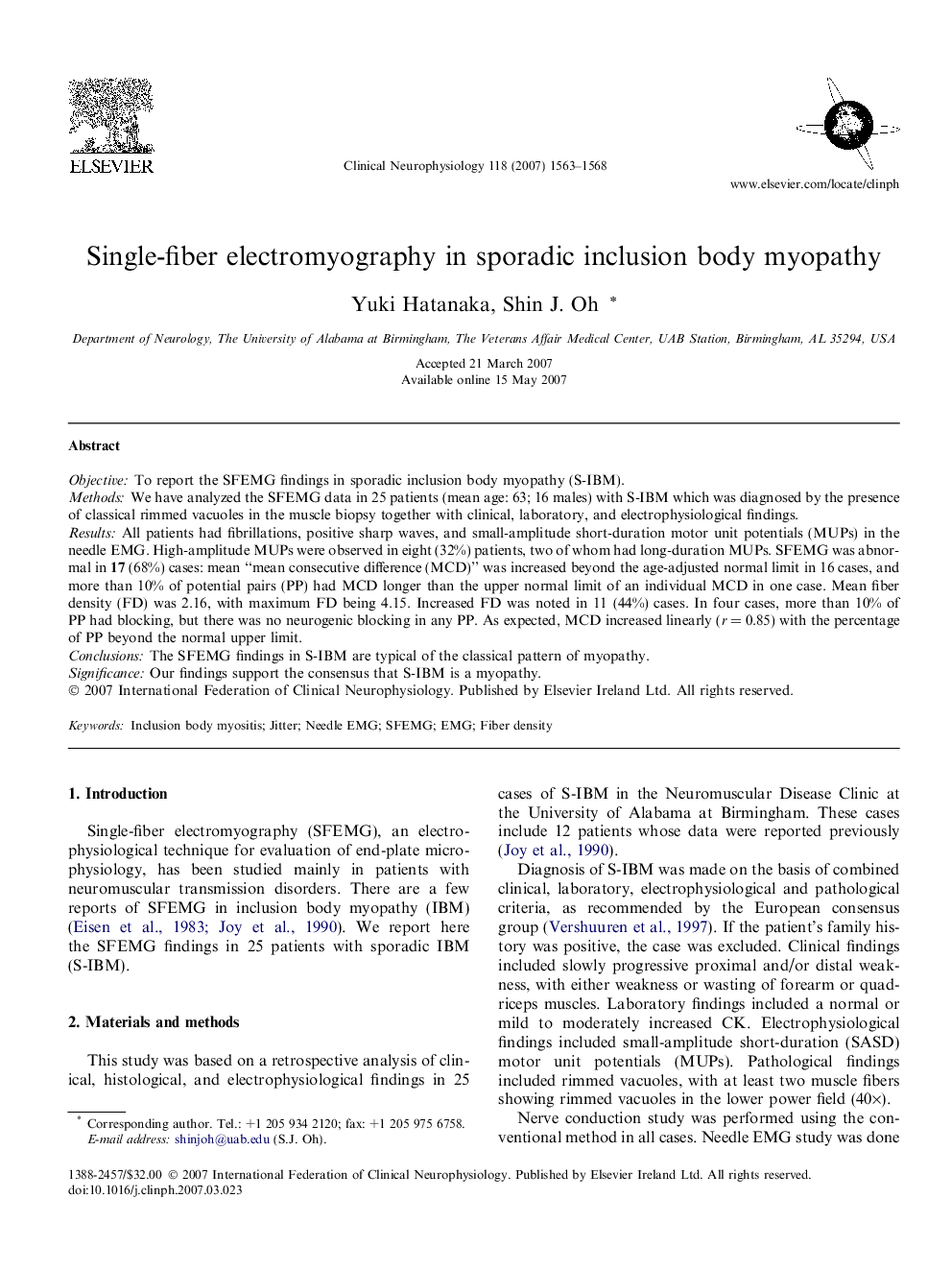| Article ID | Journal | Published Year | Pages | File Type |
|---|---|---|---|---|
| 3047631 | Clinical Neurophysiology | 2007 | 6 Pages |
ObjectiveTo report the SFEMG findings in sporadic inclusion body myopathy (S-IBM).MethodsWe have analyzed the SFEMG data in 25 patients (mean age: 63; 16 males) with S-IBM which was diagnosed by the presence of classical rimmed vacuoles in the muscle biopsy together with clinical, laboratory, and electrophysiological findings.ResultsAll patients had fibrillations, positive sharp waves, and small-amplitude short-duration motor unit potentials (MUPs) in the needle EMG. High-amplitude MUPs were observed in eight (32%) patients, two of whom had long-duration MUPs. SFEMG was abnormal in 17 (68%) cases: mean “mean consecutive difference (MCD)” was increased beyond the age-adjusted normal limit in 16 cases, and more than 10% of potential pairs (PP) had MCD longer than the upper normal limit of an individual MCD in one case. Mean fiber density (FD) was 2.16, with maximum FD being 4.15. Increased FD was noted in 11 (44%) cases. In four cases, more than 10% of PP had blocking, but there was no neurogenic blocking in any PP. As expected, MCD increased linearly (r = 0.85) with the percentage of PP beyond the normal upper limit.ConclusionsThe SFEMG findings in S-IBM are typical of the classical pattern of myopathy.SignificanceOur findings support the consensus that S-IBM is a myopathy.
